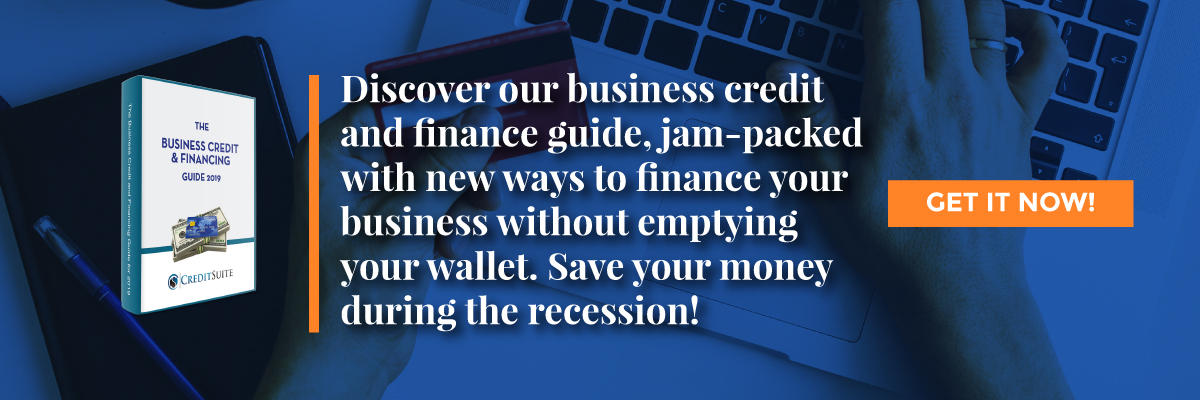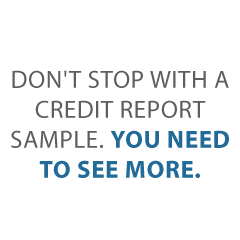
How to Read a Dun and Bradstreet Report
What’s in a Dun and Bradstreet Report? And What Do All Those Numbers Mean, Anyway?
Do you have a copy of your Dun and Bradstreet report?
What is Dun and Bradstreet?
They are the oldest and largest credit reporting agency. You need a D-U-N-S number to start building business credit. No D-U-N-S number? Then get one; they’re free. This number gets a business into their system.
The main score is PAYDEX. But a business will not get a PAYDEX score, unless it has at least 3 trade lines reporting, and a D-U-N-S number. A business must have both to get a D&B score or report.
Dun and Bradstreet Reports
D&B offers database-generated reports. These help their clients decide if a business is a good credit risk. Companies use the reports to make informed business credit decisions and avoid bad debt. Several factors enter into creating such a report.
In general when D&B does not have all of the information that they need, they will say so in their reports. But missing data does not necessarily mean a company is a poor credit risk. Instead, the risk is unknown.
D&B’s database contains over 350 million companies around the world. It includes millions of active firms, and over 100 million companies which are out of business. But these are kept for historical purposes. This data goes into their reports.
D&B constantly gathers data. They list over a billion trade experiences. It works to improve its analyses to assure the greatest degree of accuracy possible. To ensure as accurate a report as possible, give D&B your company’s current financial statements.
Predictive Models and Scoring
D&B takes historical information to try to predict future outcomes. This is to identify the risks inherent in a future decision. They take objective and statistically derived data, rather than subjective and intuitive judgments.
You can find a sample report here: dnb.com/content/dam/english/dnb-solutions/risk-management/sample_comprehensive_report.pdf .
Dun and Bradstreet Report Sections
Here are the sections you could currently see in a typical Dun and Bradstreet business credit profile report.
Executive Summary
The report starts with basic company information, such as number of employees, year the business was started, net worth, and sales.
D&B Rating
This rating helps companies quickly assess a business’s size and composite credit appraisal. Dun & Bradstreet bases this rating on information in a company’s interim or fiscal balance sheet plus an overall evaluation of the firm’s creditworthiness. The scale goes from 5A to HH. Rating Classifications show company size based on worth or equity. D&B assigns such a rating only if a company has supplied a current financial statement.
The rating contains a Financial Strength Indicator. It is calculated using the Net Worth or Issued Capital of a company. Preference is to use Net Worth. D&B will show if a business is new or if they never got this information.
This section also adds a Composition Credit Appraisal. This number runs 1 through 4, and it reflects D&B’s overall rating of a business’s creditworthiness.
The scores mean:
- 1 – High
- 2 – Good
- 3 – Fair
- 4 – Limited
A D&B rating might look like 3A4.
Keep your business protected with our professional business credit monitoring.
D&B PAYDEX
This part shows two gauges: an up to 24 month PAYDEX, and an up to 3 month PAYDEX. Hence you can see recent history and a firm’s performance over time.
Both gauges have the same scores. A 1 means greater than 120 days slow (in paying bills). A score of 50 means 30 days slow. One great score is 80, which means prompt. And 100 means anticipates. A 100 is the best PAYDEX score you can get.
PAYDEX Score
This is Dun & Bradstreet’s dollar-weighted numerical rating of how a company has paid the bills over the past year. D&B bases this score on trade experiences which various vendors report. The Score ranges from 1 to 100. Higher scores mean a better payment performance. PAYDEX scores reflect how well a company pays its bills.
Predictive Analytics
This next section shows likelihood of business failure. It also shows how frequently a business is late in paying its financial obligations. These are comparative analyses, the Financial Stress Class, and the Credit Score Class.
Keep your business protected with our professional business credit monitoring.
Financial Stress Class
Overall numbers range from 1 to 5. A 1 is businesses least likely to fail, and 5 is firms most likely to fail. The Financial Stress Class measures likelihood of failure.
Financial Stress Class Score
These more granular scores range from 1,001 to 1,875. A score of 1,001 represents the highest probability of business failure. A figure of 1,875 shows the lowest probability of business failure.
Credit Score Class
The Credit Score Class measures how often a company is delinquent in paying its bills. Overall numbers range from 1 to 5. A 1 is businesses least likely to be late. 5 is firms most likely to be late making payments. More granular scores run from 101 to 670. 670 is the highest risk.
Credit Limit Recommendation
It shows a spectrum of risk. Your risk category can be low, moderate, or high. Risk is assessed using D&B’s scoring methodology. It is one factor used to create the recommended limits.
D&B Viability Rating
This section contains:
- Viability Score – to show risk
- Portfolio Comparison – also a demonstration of risk
- Data Depth Indicator – descriptive vs. predictive
- Company Profile – this shows if financial data and other information was available
Credit Capacity Summary
This part repeats the D&B Rating above. It includes financial strength, the composite credit appraisal, and payment activity.
Business History and Business Registration
This section contains information on ownership. It also shows where a corporation is filed (i.e. which state). This includes the type of corporation, and the incorporation date.
Government Activity Summary and Operations Data
This section gives basic information on if a company works as a contractor for the government. It also shows the kind of business a company is in. It shows what the facilities are like, including general data on its location.
Industry Data and Family Tree
The section shows the business’s SIC and NAICS codes. It also shows where the branches and subsidiaries are. This list is just the first 25 branches, subsidiaries, divisions, and affiliates, both domestic and international. D&B offers a Global Family Linkage Link to view the full listing.
Financial Statements
This section is for the financial statements D&B has on a business. It shows assets and liabilities, with specifics such as equipment, and even common stock offerings.
Indicators and Full Filings
This part shows public records, like judgments, liens, lawsuits, and UCC filings.
This part also breaks down where filings are venued, like the court or the county recorder of deeds office. It shows if judgments were satisfied (paid). It also shows which equipment is subject to UCC filings.
Commercial Credit Score
This part shows the Credit Score Class again. It also shows a comparison of the incidence of delinquent payments. Also, it includes key factors to help anyone reading the report interpret these findings. It explains what the numbers mean.
Credit Score Percentile Norms Comparison
Here, D&B compares a company to others on the basis of region, industry, number of employees and time in business.
Financial Stress Score
This section shows a Financial Stress Class and a Financial Stress Score Percentile. The Financial Stress Class runs from 1-5, with 5 being the worst score.
Financial Stress Score Percentile
The Financial Stress Score Norms calculate an average score and percentile for similar firms. The norms benchmark where a business stands. This is in relation to its closest business peers.
It is a comparison to other businesses. The percentile contains a Financial Stress National Percentile. The Financial Stress National Percentile reflects the relative ranking of a company among all scorable companies in D&B’s file. It also contains a Financial Stress Score. The report indicates the probability of failure with a particular score.
Keep your business protected with our professional business credit monitoring.
Financial Stress Score Percentile Comparison
The idea behind this score is to predict how likely it is a business will fail over the next 12 months. The Financial Stress Class indicates that a firm shares some of the same business and financial characteristics of other companies with this classification. It does not mean the firm will necessarily experience financial stress. The probability of failure shows the percentage of firms in a given percentile that discontinue operations with loss to creditors.
The average probability of failure is based on businesses in D&B’s database. It is there for comparative purposes. The Financial Stress National Percentile reflects the relative ranking of a company among all scorable companies in D&B’s file. The Financial Stress Score offers a more precise measure of the level of risk than the Financial Stress Class and Percentile. It is meant for customers using a scorecard approach to determining overall business performance.
Advanced PAYDEX + CLR
This section repeats the 24 month and 3 month PAYDEX gauges. It also includes a repeat of the Credit Limit Recommendation. There is also a PAYDEX Yearly Trend. It shows the PAYDEX scores of a business compared to the Primary Industry from each of the last four quarters.
PAYDEX Yearly Trend
The PAYDEX Yearly Trend is a graph. It includes detailed payment history. with payment habits and a payment summary. This helps show if a business pays its bigger bills first or last.
Dun and Bradstreet: Takeaways
A Dun & Bradstreet business credit report has an impressive level of detail. The idea is to make it easier to decide if it’s a good idea to extend credit to another business. And your own company’s report can help show you where you can improve your payment history, and how your firm compares to similar businesses.
The post How to Read a Dun and Bradstreet Report appeared first on Credit Suite.












